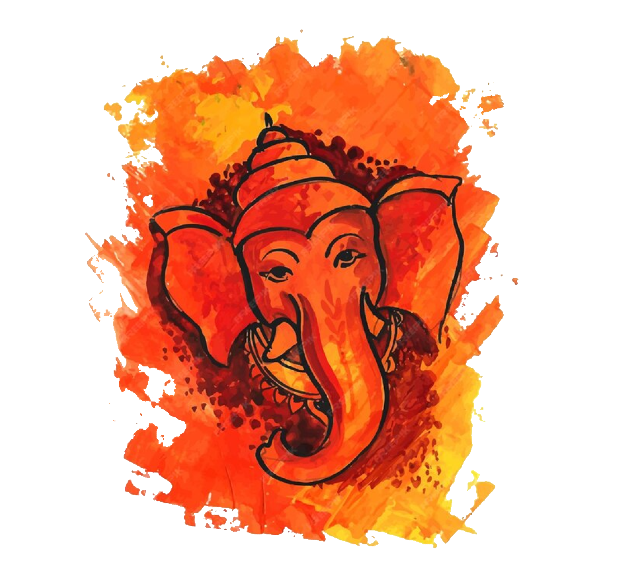
Brief Overview – 32 Forms of
Shree Ganesha
The 32 Forms, Symbolism, and Cultural Significance
Abstract :
Ganesha, one of the most revered and widely worshiped deities in Hinduism, is celebrated for his diverse forms and multifaceted symbolism. This comprehensive article explores the 32 distinct forms of Lord Ganesha, their intricate meanings, and their profound cultural impact. Drawing from ancient scriptures, mythological narratives, and contemporary practices, we examine how Ganesha’s presence as the obstacle remover and harbinger of auspicious beginnings has profoundly influenced Hindu spirituality and daily life.
Introduction :
Ganesha, often lovingly referred to as Vinayaka or Ganapati, stands as an emblematic figure in Hinduism. Recognized for his elephant-like head, Ganesha is the main identity of this deity. He is the remover of obstacles and is invoked at the launch of events and businesses. Ganesha is also considered the god of auspicious beginnings and the bestower of abundant fortune. He is the son of Lord Shiva and Hindu Goddess Parvati, further adding to his significance in Hindu mythology.
Ganesha is known by many names and has many different forms, a concept originating from ancient Hindu texts and mythological stories. The Ganapati Atharvashirsha Upanishad extols the glory of Lord Ganesha and mentions these forms, while the Ganesha Purana and the Mudgala Purana provide further insights into their attributes and significance. These 32 forms are categorized into “Shodasa Ganapati,” representing the first 16 forms, and “Ekavimsathi,” depicting the later ones. Among them, “Mahaganapathi” holds a special place in the hearts of devotees for widespread worship.
Significance and Symbolism :
Each of Ganesha’s 32 forms carries profound symbolic meaning and serves distinct purposes in the lives of devotees. Bala Ganapati, with his childlike nature, symbolizes innocence and is particularly adored by children and students. He is depicted holding sugarcane, mango, jackfruit, and his favorite modaka, a sweet, in his hands and trunk.
Vira Ganapati, the valiant form, wields an array of weapons, reflecting Ganesha’s physical and intellectual prowess. Resplendent with a range of weapons in his several hands, including a bow, sword, gada, spear, shield, battle axe, and more, this form showcases Ganesha’s might and intelligence.
Vighna Ganapati, known as the “Lord of Obstacles,” is adorned in brilliant gold and holds a variety of tools to overcome impediments, such as a noose, goad, tusk, modaka, conch, discus, bouquet of flowers, sugar cane, flower arrow, and an axe.
Lakshmi Ganapathi stands flanked by the goddess of wealth, Lakshmi. He holds the varada mudra in his hand and a sprig of kalpavriksha, symbolizing blessings of wealth, wisdom, and knowledge.
Nritya Ganapati captivates with his dancing form, signifying grace and entertainment for the gods. In most depictions, he is shown raising his right leg, with the left leg placed on the earth, reflecting the élan and grace with which he moves.
Cultural Significance :
The 32 forms of Ganesha play a pivotal role in Hindu culture and spirituality. These forms are not just objects of religious devotion but also sources of artistic inspiration, contributing to the vibrant tapestry of Indian art and culture.
Ganesha Chaturthi, a ten-day festival, is a testament to the cultural significance of these forms. Devotees install Ganesha idols in homes and public spaces, with each form being represented on different days. This tradition fosters community spirit, creativity, and a deep sense of spirituality.
Ganesha’s presence is not limited to rituals but extends to everyday life. He is known to bring good fortune and is a revered protector, ensuring success in endeavors. The various forms of Ganesha allow devotees to seek blessings according to their needs and aspirations.
Conclusion :
Ganesha’s 32 forms are a reflection of the multifaceted nature of Hindu spirituality and culture. Each form carries a specific role and significance, offering a diverse array of blessings and attributes for devotees to seek. The Ganapati Navadasha, as described in the Ganesha Purana, continues to inspire artists, ignite devotion, and illustrate the dynamic and inclusive nature of Hinduism.
Placing a Ganesha idol in one’s home is a common practice, as it is believed to remove obstacles, bring luck, and ensure success. The choice of idol, with the trunk either curved left or right, has specific connotations and should be made with care. The straight-trunked Ganesha represents a state of elevated consciousness.
In all these forms, Ganesha, the remover of obstacles and the harbinger of auspicious beginnings, blesses his devotees with success, intellect, wisdom, and the strength to overcome challenges. As Vigneshwara, he continues to guide and protect those who seek his divine presence in their lives, ensuring that they navigate life’s obstacles and experience abundant fortune.
Editor – Kaalchakra Team
[ Note – Before Concluding anything as a Finale, Please Go through Original Scriptures of Vaidik Literature Written in Sanskrit and Also with Meaning of That time of Language. Because English is a Limited language to Explaining the Deeper Knowledge of Vaidik Kaal. ]
